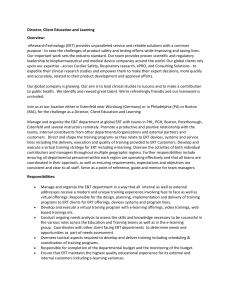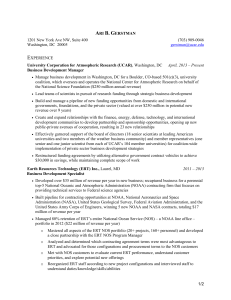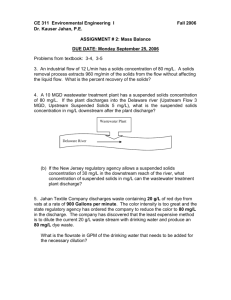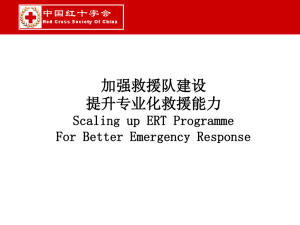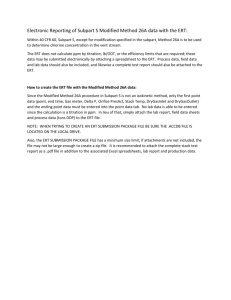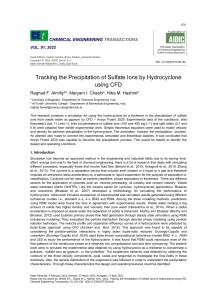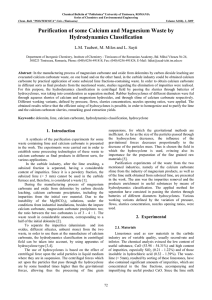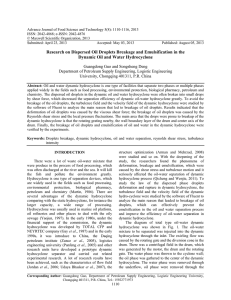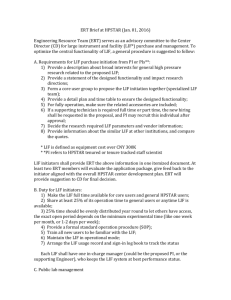measurement of solids concentration in - The Gibson Group
advertisement
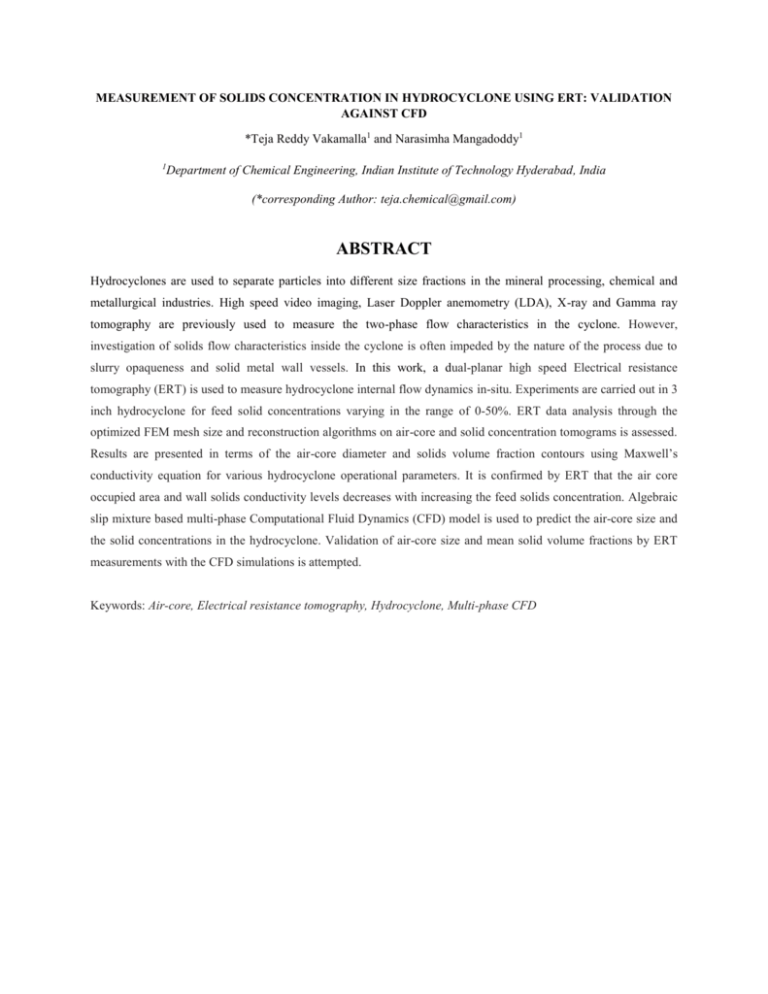
MEASUREMENT OF SOLIDS CONCENTRATION IN HYDROCYCLONE USING ERT: VALIDATION AGAINST CFD *Teja Reddy Vakamalla1 and Narasimha Mangadoddy1 1 Department of Chemical Engineering, Indian Institute of Technology Hyderabad, India (*corresponding Author: teja.chemical@gmail.com) ABSTRACT Hydrocyclones are used to separate particles into different size fractions in the mineral processing, chemical and metallurgical industries. High speed video imaging, Laser Doppler anemometry (LDA), X-ray and Gamma ray tomography are previously used to measure the two-phase flow characteristics in the cyclone. However, investigation of solids flow characteristics inside the cyclone is often impeded by the nature of the process due to slurry opaqueness and solid metal wall vessels. In this work, a dual-planar high speed Electrical resistance tomography (ERT) is used to measure hydrocyclone internal flow dynamics in-situ. Experiments are carried out in 3 inch hydrocyclone for feed solid concentrations varying in the range of 0-50%. ERT data analysis through the optimized FEM mesh size and reconstruction algorithms on air-core and solid concentration tomograms is assessed. Results are presented in terms of the air-core diameter and solids volume fraction contours using Maxwell’s conductivity equation for various hydrocyclone operational parameters. It is confirmed by ERT that the air core occupied area and wall solids conductivity levels decreases with increasing the feed solids concentration. Algebraic slip mixture based multi-phase Computational Fluid Dynamics (CFD) model is used to predict the air-core size and the solid concentrations in the hydrocyclone. Validation of air-core size and mean solid volume fractions by ERT measurements with the CFD simulations is attempted. Keywords: Air-core, Electrical resistance tomography, Hydrocyclone, Multi-phase CFD

